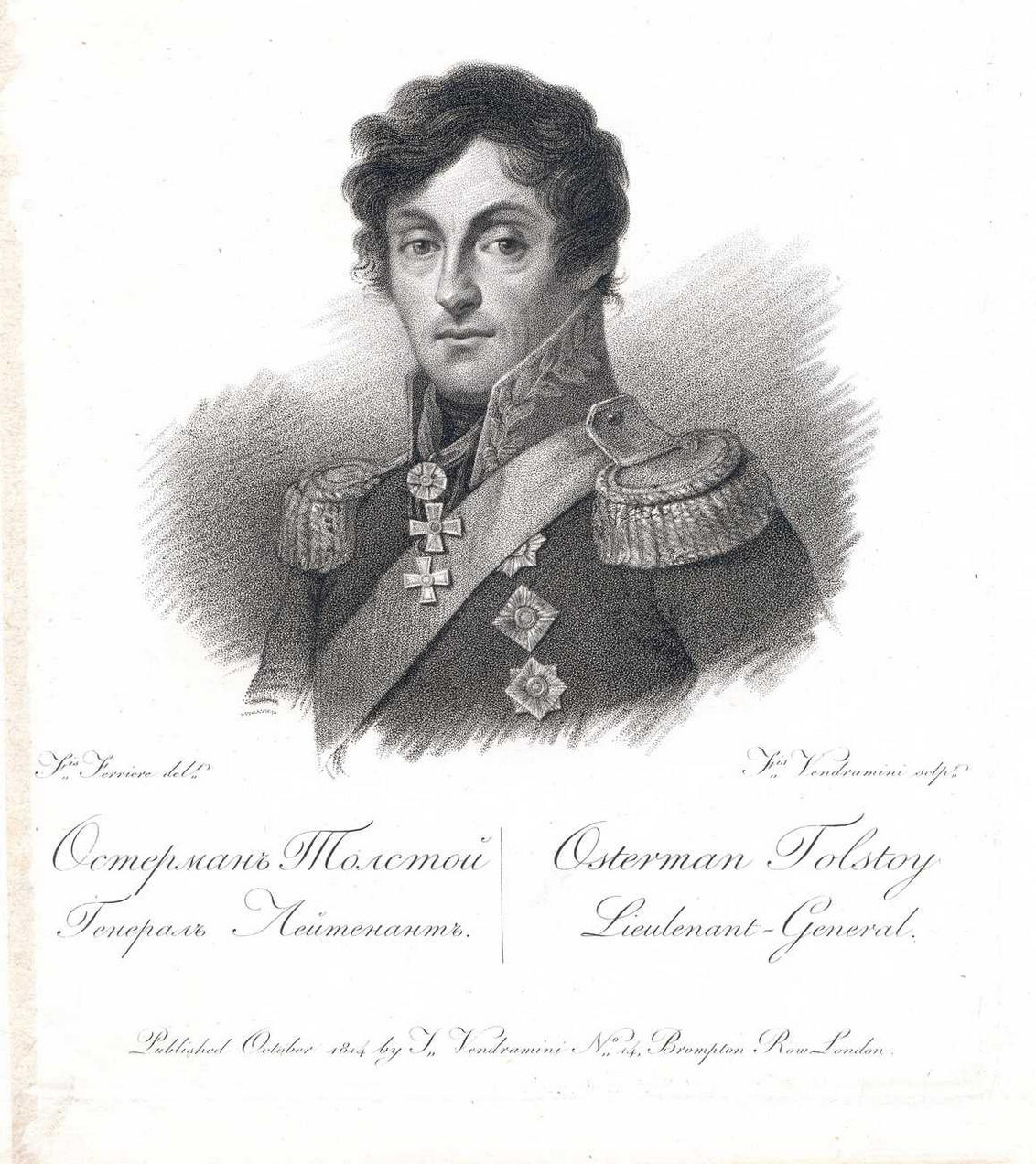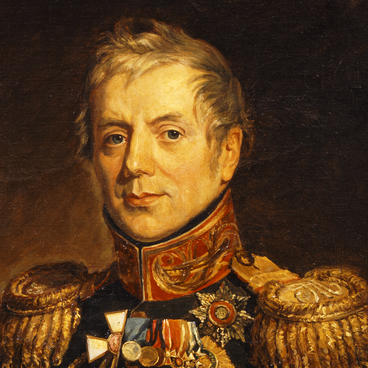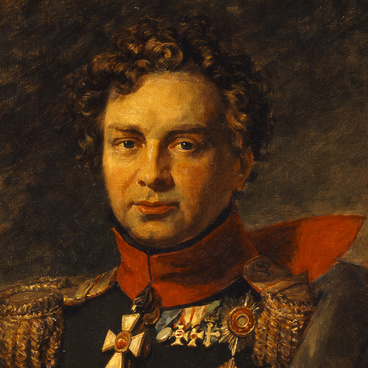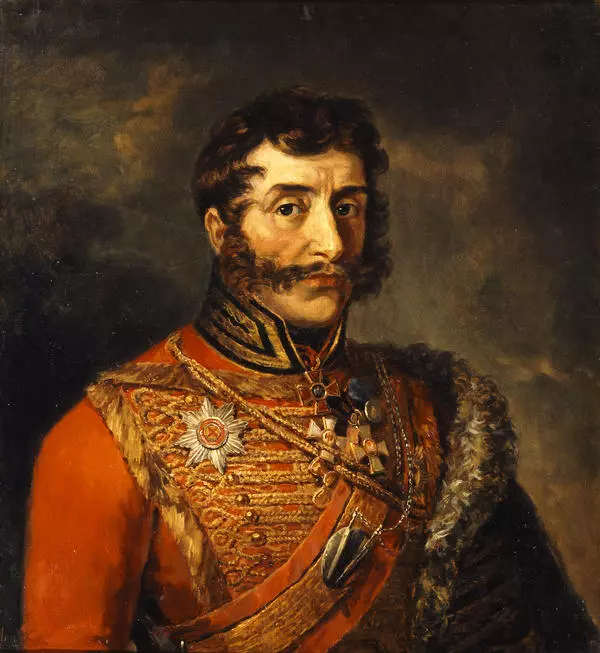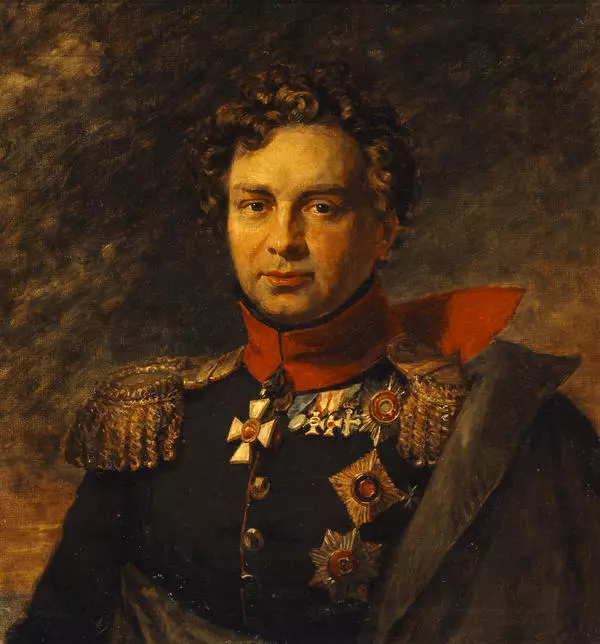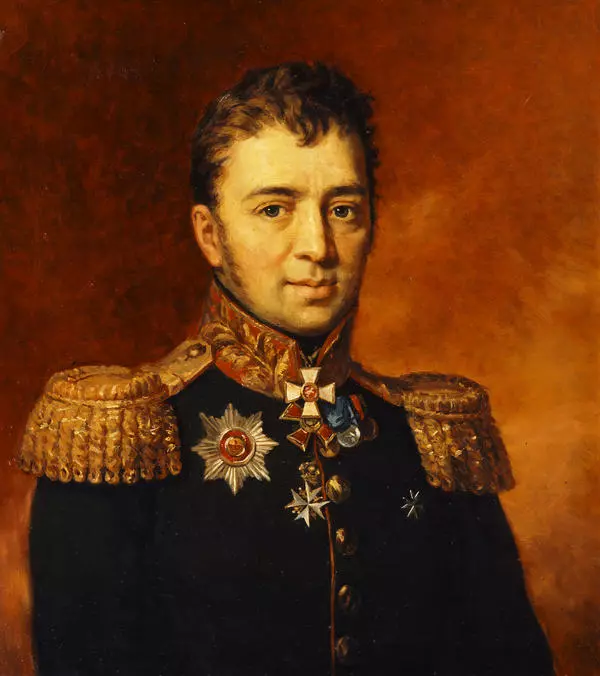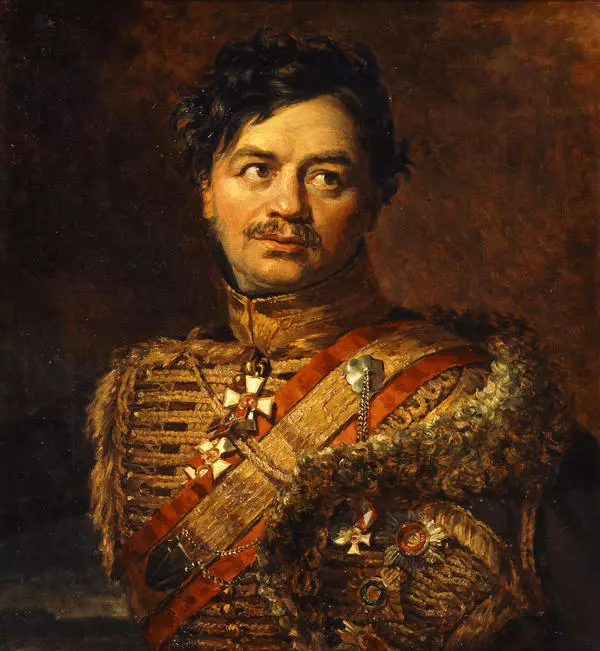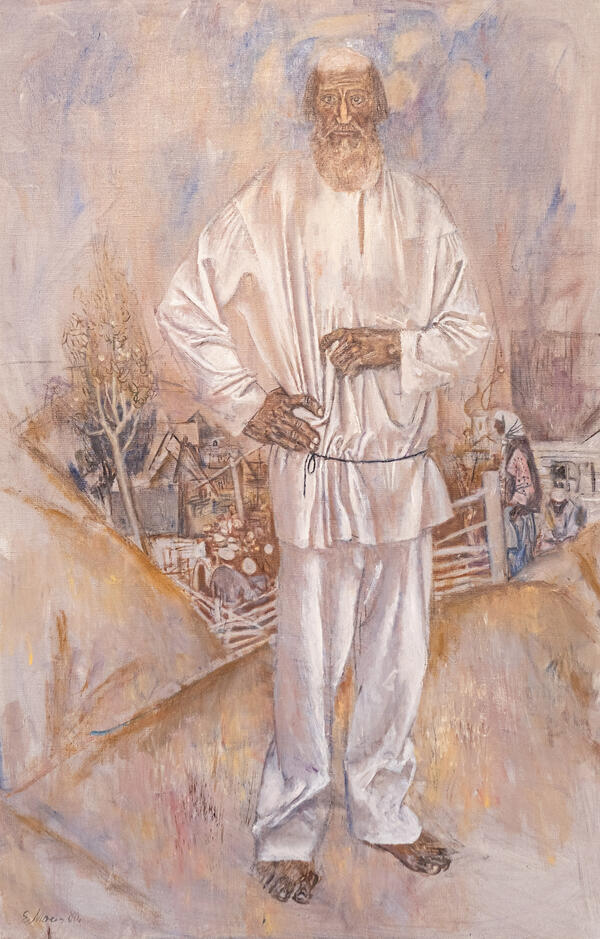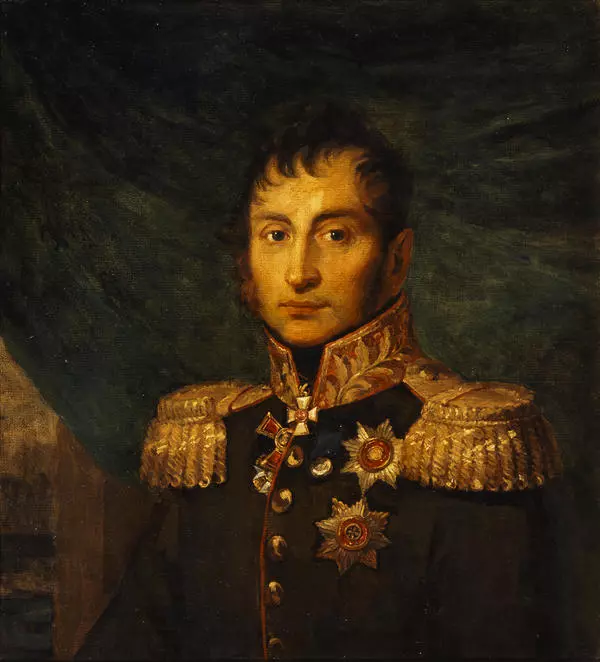Count Alexander Osterman-Tolstoy was born into a noble family. His great-grandfather was German-born Andrey Osterman, a diplomat and supporter of Peter I. Alexander was signed up for service at an early age as was the custom at the time. In 1788 he was already a senior ensign in the Preobrazhensk Life-Guard Regiment.
At the age of 18, the count volunteered for the war with Turkey and in 1790 he was awarded with the Order of St. George 4 class for bravery displayed in the assault of Izmail. He joined the army in the rank of a lieutenant colonel in 1793.Five years later, he was promoted to a major general and in 1806 he became a lieutenant general.
Osterman-Tolstoy participated in the campaign against the French waged in1806-1807.He commanded the rear guard in the battle of Czarnowo and was conferred with the Order of St. Anna 2nd class; he also distinguished himself in the battle of Pultusk and was awarded again with the Order of St. George 3rd class that time.
In the major battle of the Fourth Coalition at Preussisch-Eylau, Osterman-Tolstoy commanded the left flank of the Russian army. For his combat merit in the battle, he was awarded the Order of St.
Vladimir 2nd class. In the battle of Guttstadt he was badly wounded in the leg and he had to resign his commission with the right to off-duty wearing his uniform. He was also honored with a sign of special distinction-the golden sword with diamonds For Bravery.
Osterman-Tolstoy returned to the army before the 1812 campaign. In summer of 1812, the Lieutenant General was appointed the commander of the 4th Infantry Corps which distinguished itself in the battles of Ostrovno, Vatutino and Borodino. He garnered the Order of St. Alexander of Neva for his extraordinary courage in the battle of Borodino where the count suffered a severe concussion.
Osterman-Tolstoy used to give his soldiers the succinct order to stay firm or die in action. Once, when it seemed to the General that the rifle files were too slow in moving forward, he raised threateningly his lash at them to face their bewildered looks. It turned out that due to his poor eyesight, the General had crossed the French line and was urging the enemy soldiers.
He participated in foreign campaigns. In the battle of Kulm in 1813, the General was badly wounded by a cannon ball and his left hand was amputated. To those who expressed compassion for him, the General answered, ‘It’s a privilege to be wounded in the fight for the Motherland. As for my left hand, I still have the right one, which I need to make the sign of the cross, the sign of my faith in God on whom I rest all my hope’. For his glorious actions in this battle, he was honored with the Order of St. George 2nd class, one of the highest military awards in Russian Empire.
The Portrait of Alexander Osterman-Tolstoy was painted by English painter George Dawe for the Military Gallery of the Winter Palace, commemorating the heroes of the Patriotic War of 1812. In the Museum-Panorama “Battle of Borodino”, there is a copy of the portrait of Osterman-Tolstoy made in 1964.
At the age of 18, the count volunteered for the war with Turkey and in 1790 he was awarded with the Order of St. George 4 class for bravery displayed in the assault of Izmail. He joined the army in the rank of a lieutenant colonel in 1793.Five years later, he was promoted to a major general and in 1806 he became a lieutenant general.
Osterman-Tolstoy participated in the campaign against the French waged in1806-1807.He commanded the rear guard in the battle of Czarnowo and was conferred with the Order of St. Anna 2nd class; he also distinguished himself in the battle of Pultusk and was awarded again with the Order of St. George 3rd class that time.
In the major battle of the Fourth Coalition at Preussisch-Eylau, Osterman-Tolstoy commanded the left flank of the Russian army. For his combat merit in the battle, he was awarded the Order of St.
Vladimir 2nd class. In the battle of Guttstadt he was badly wounded in the leg and he had to resign his commission with the right to off-duty wearing his uniform. He was also honored with a sign of special distinction-the golden sword with diamonds For Bravery.
Osterman-Tolstoy returned to the army before the 1812 campaign. In summer of 1812, the Lieutenant General was appointed the commander of the 4th Infantry Corps which distinguished itself in the battles of Ostrovno, Vatutino and Borodino. He garnered the Order of St. Alexander of Neva for his extraordinary courage in the battle of Borodino where the count suffered a severe concussion.
Osterman-Tolstoy used to give his soldiers the succinct order to stay firm or die in action. Once, when it seemed to the General that the rifle files were too slow in moving forward, he raised threateningly his lash at them to face their bewildered looks. It turned out that due to his poor eyesight, the General had crossed the French line and was urging the enemy soldiers.
He participated in foreign campaigns. In the battle of Kulm in 1813, the General was badly wounded by a cannon ball and his left hand was amputated. To those who expressed compassion for him, the General answered, ‘It’s a privilege to be wounded in the fight for the Motherland. As for my left hand, I still have the right one, which I need to make the sign of the cross, the sign of my faith in God on whom I rest all my hope’. For his glorious actions in this battle, he was honored with the Order of St. George 2nd class, one of the highest military awards in Russian Empire.
The Portrait of Alexander Osterman-Tolstoy was painted by English painter George Dawe for the Military Gallery of the Winter Palace, commemorating the heroes of the Patriotic War of 1812. In the Museum-Panorama “Battle of Borodino”, there is a copy of the portrait of Osterman-Tolstoy made in 1964.

